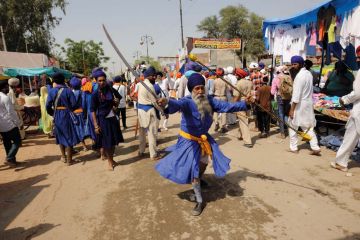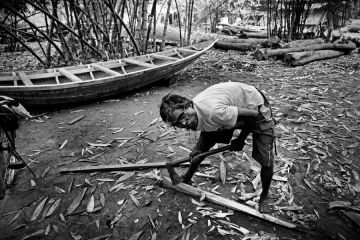The Van-Gujjars are a nomadic tribe originally from Jammu & Kashmir, now spread out across the Himalayas in search of forests and meadows for their cattle. Every year, as the snow start melting in the mountains, it’s their time to start walking.Gujjars earn their living by selling milk and dairy products. Once they settle in their summer home, they make mawa, which is used in Indian sweets, and sell it in nearby villages and towns every week. In May, I followed a family from this commu





